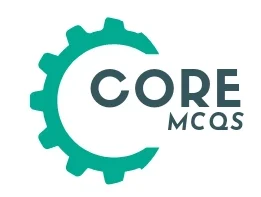Chemistry Chapter 16 Entry Test MCQs
51. Phenol is treated with bromine water and shaken well. The white precipitate formed during the process is
a. 2, 4-dibromophenol
b. m-bromophenol
c. A mixture of o- and p-bromophenols
d. 2, 4, 6-tribromophenol
52. Rate of substitution reaction in phenol is
a. Faster than the rate of benzene
b. Slower than the rate of benzene
c. Does not go for substituition
d. Equal to the rate of benzene
53. One mole of phenol reacts with bromine to form tribromophenol. How much bromine is used
a. 4.5 mol
b. 1..5 mol
c. 6 mol
d. 3 mol
54. Phenol on reduction with H2 in the presence of Ni catalyst gives
a. Cyclohexane
b. Benzene
c. Cyclohexanol
d. Toluene
55. The conjugate base of which of the following is most stable:
a. Formic acid
b. Phenol
c. Ethanol
d. Acetic acid
56. The reaction of phenol with conc. HNO3 gives:
a. Adipic acid
b. Picric acid
c. Salicylic acid
d. Benzoic acid
57. Phenol can be distinguished from benzene by:
a. Hydrogenation
b. Nitration
c. Bromination
d. Sulphonation
58. Treating phenol with formaldehyde in the presence of dilute base forms Bakelite. The process involved is
a. Elimination
b. Condensation polymerization
c. Oxidation
d. Additional polymerization
59. Phenol was isolated by Runge from
a. Wood
b. Vegetable oil
c. molasses
d. Coaltar
60. Which compound has the highest boiling point
a. Methanol
b. phenol
c. Ethanol
d. Diethyl ether
Ethers
61. In ethers, the C – O – C bond angle is
a. 110°
b. 180°
c. 60°
d. 90°
62. Structure of diethyl ether is confirmed by
a. Wurtz’s synthesis
b. Kolbe’s synthesis
c. Williamson’s synthesis
d. Frankland’s synthesis
63. Chloro-Ethane reacts with Which of the Following to Give Diethyl Ether?
a. C2H5ONa
b. NaOH
c. Na2S2O3
d. H2SO4
64. When the reaction between methyl iodide and sodium ethoxide occurs, we get
a. Ethyl acetate
b. Methyl acetate
c. Ethyl methyl ether
d. methyl ethyl ketone
65. An organic compound (A) reacts with sodium metal and forms (B). On heating with conc. H2SO4 (A) gives diethyl ether. (A) and (B) are respectively
a. CH3OH& CH3ONa
b. C2H5OH & C2H5ONa
c. C4H9OH & C4H9ONa
d. C3H7OH & CH3ONa
66. Oxygen atom in ether is
a. Comparatively inert
b. Very active
c. Active
d. Replaceable
